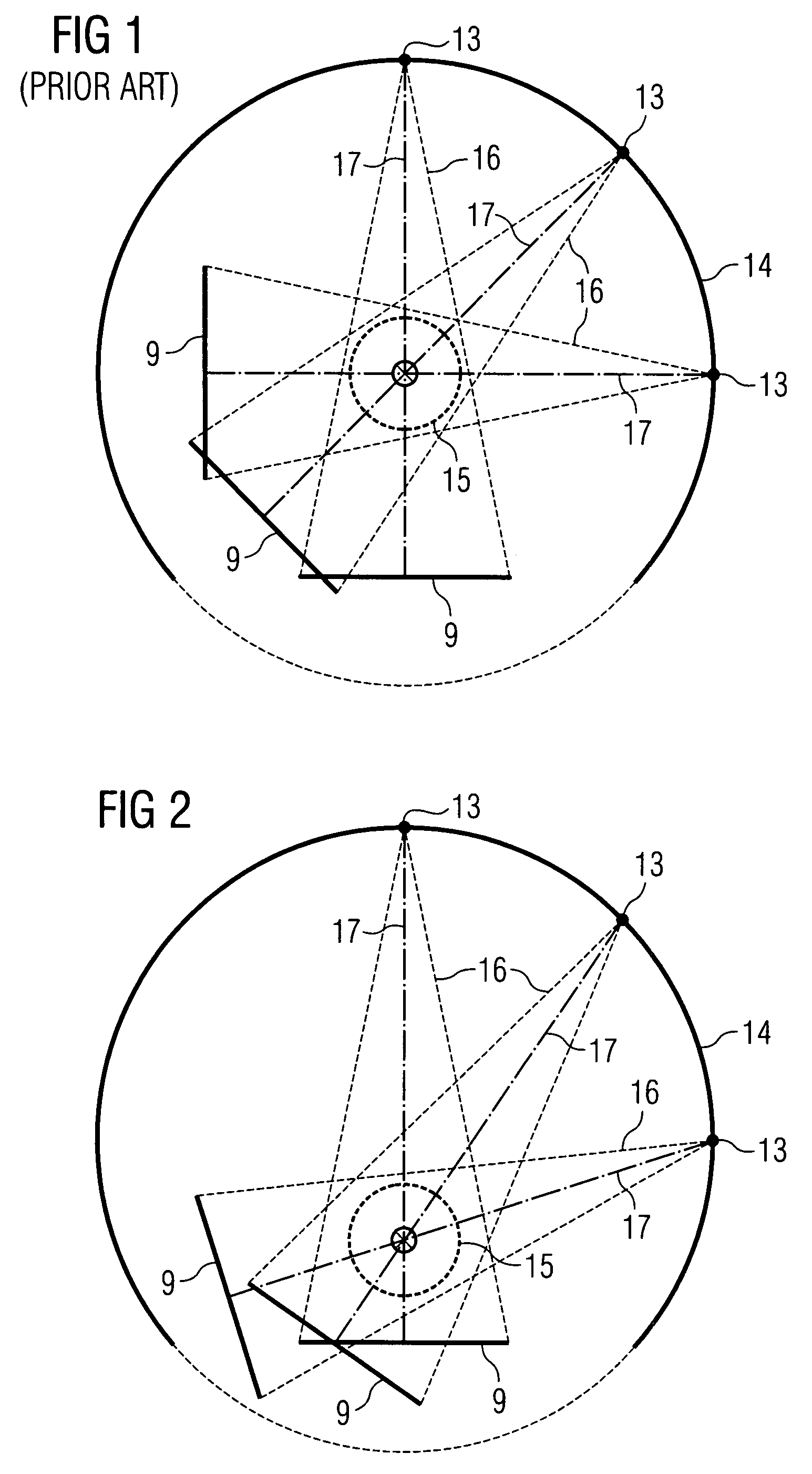Method for x-ray image recording of a non-centric imaging area using an x-ray imaging system, and x-ray imaging system
a technology of x-ray imaging and non-centric imaging, applied in the field of x-ray image recording of a non-centric imaging area using an x-ray imaging system, and x-ray imaging system, can solve problems such as inability to be used in many directions
- Summary
- Abstract
- Description
- Claims
- Application Information
AI Technical Summary
Benefits of technology
Problems solved by technology
Method used
Image
Examples
Embodiment Construction
[0023]With regard to known C-arm systems, the rotation of the C-arm with the X-ray tube and the X-ray detector takes place around a fixed rotation center, in which the area of interest of the examination object must also be situated. In this situation, the examination object is usually a patient who is suitably positioned on a patient support. FIG. 1 schematically illustrates such a recording situation in which the X-ray focus 13 of the C-arm system is guided on a segment of a circular path, also referred to in the following as the focus path 14. As a result of the rotation of the support with the X-ray tube around the fixed rotation center the X-ray detector 9 also moves on a corresponding circular path, as indicated in FIG. 1. For error-free image reconstruction the area of interest 15 must, for each projection or X-ray imaging process, lie within the beam cone 16 of the X-ray beam which is emitted by the X-ray focus 13 in the direction of the X-ray detector 9. In this situation, ...
PUM
 Login to View More
Login to View More Abstract
Description
Claims
Application Information
 Login to View More
Login to View More - R&D
- Intellectual Property
- Life Sciences
- Materials
- Tech Scout
- Unparalleled Data Quality
- Higher Quality Content
- 60% Fewer Hallucinations
Browse by: Latest US Patents, China's latest patents, Technical Efficacy Thesaurus, Application Domain, Technology Topic, Popular Technical Reports.
© 2025 PatSnap. All rights reserved.Legal|Privacy policy|Modern Slavery Act Transparency Statement|Sitemap|About US| Contact US: help@patsnap.com



